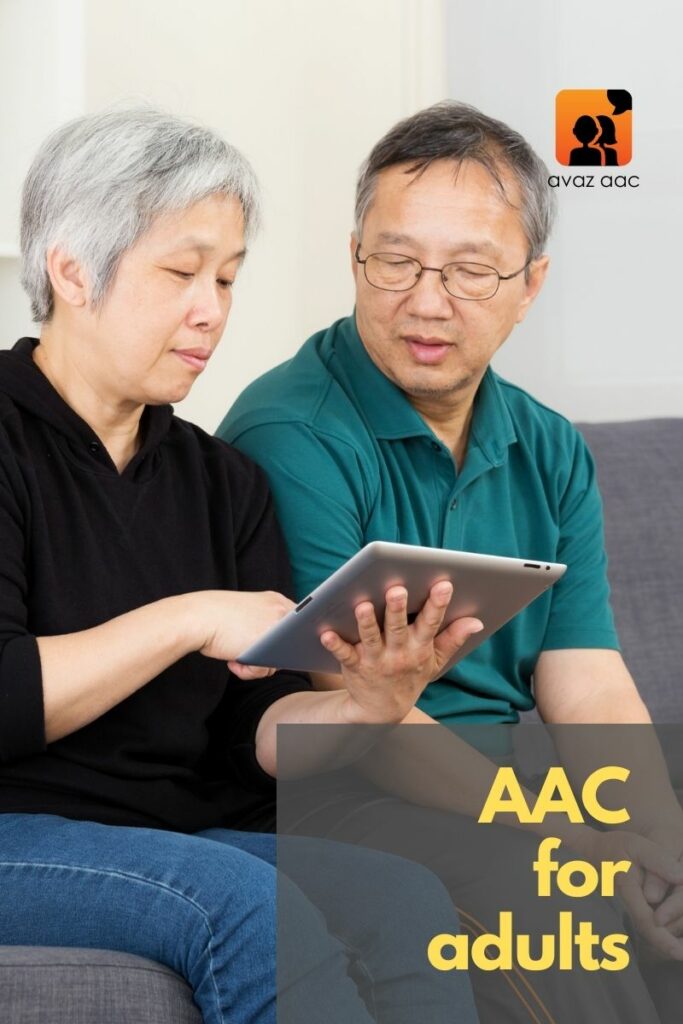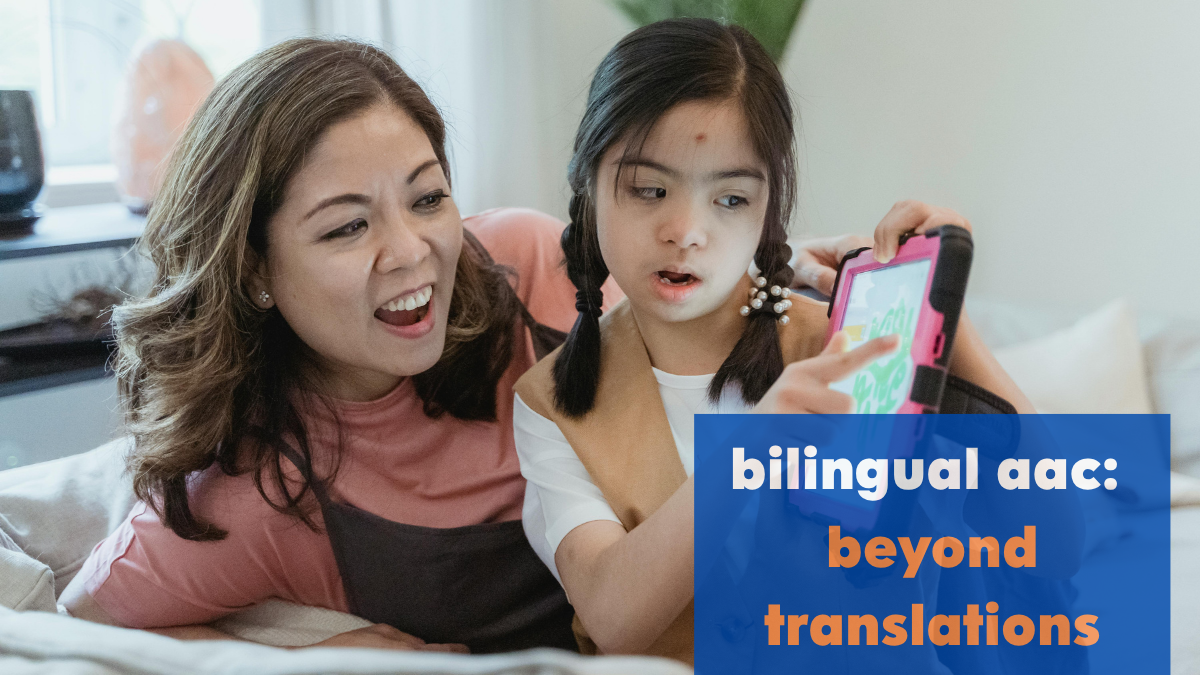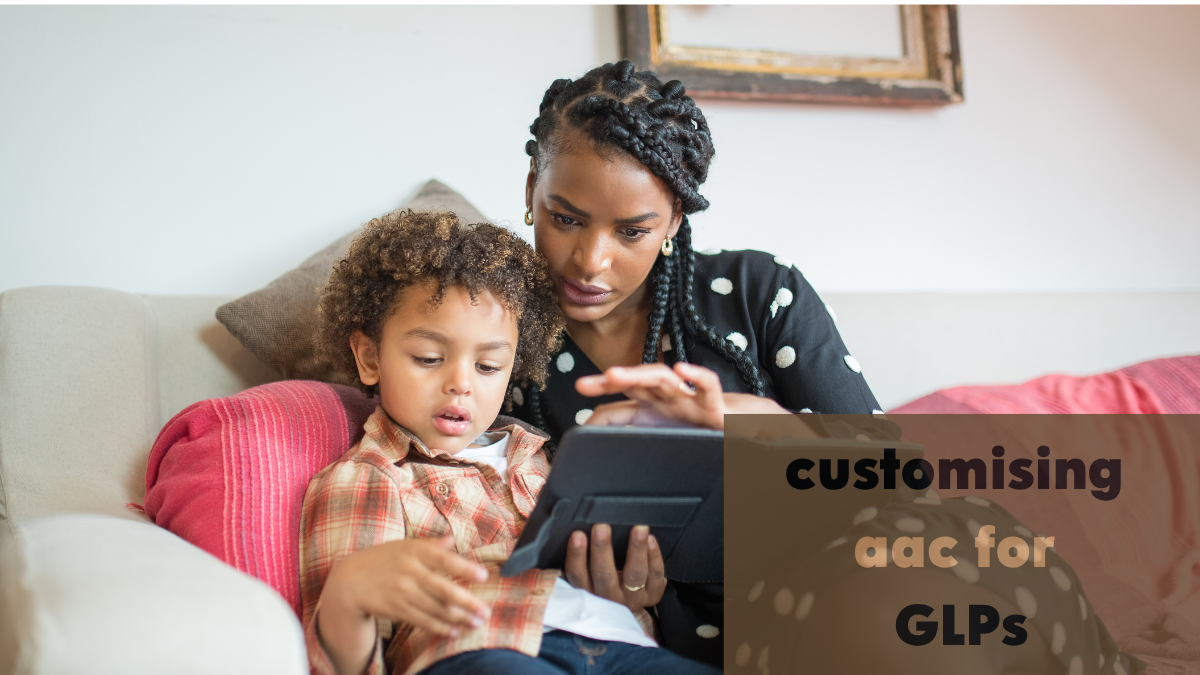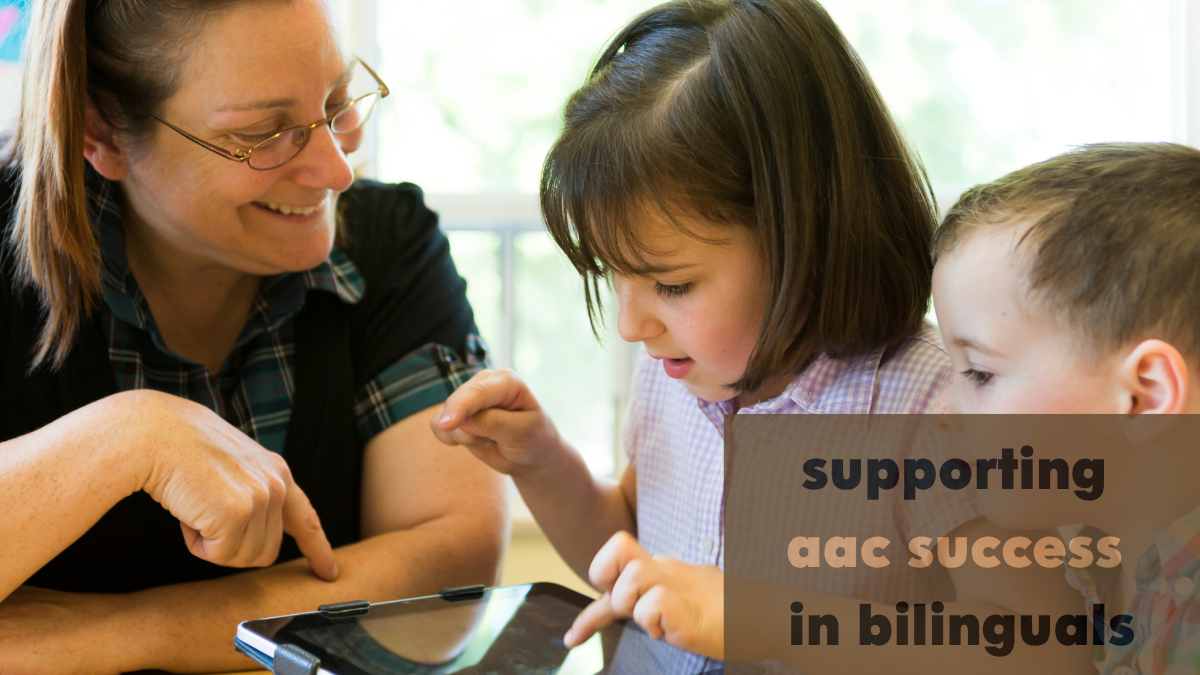AAC is a lifeline for adults who face loss of speech due to conditions such as traumatic injury to the brain. It is great even for those diagnosed with Aphasia and other neurological conditions. In this blog, learn more about AAC for adults. We also discuss workplace challenges faced by adult AAC users and how Avaz can be used with voice-controlled devices!
AAC for Adults – How Does it Work?


Adults who lose speech or those with complex communication needs, want to function independently. They want their autonomy. Understandably, not being able to speak frustrates them. This is where AAC steps in. It provides them with a means of communication to express and have a voice of their own.
The use of augmentative and alternative communication is advantageous for many adults with disabilities. It is especially useful for those who are unable to use speech to meet all their everyday communication demands.
AAC users are multimodal communicators who use both aided and unaided forms of technology. Hence, AAC has two categories – aided and unaided.
Aided AAC makes use of tools or materials. It can range from communication books or boards to speech-generating devices. The use of one’s body – through gestures, facial expressions, and sign language, is a component of unaided AAC. Adults with complex communication requirements may use multimodal AAC to communicate temporarily. Some may need to use it on a long term or permanent basis.
AAC gives people the ability to speak their minds at every given opportunity. It enables them to actively participate in family and social events. Its no-tech, low-tech and hi-tech options give the adult user the option to choose as per their requirements. Speech language pathologists suggest AAC as a means to communicatee to patients who lose their voice after a stroke or brain injury. AAC is suggested even to those facing speech delays.
Misconceptions about AAC for Adult Users
In general, family members feel that it is their responsibility to help the person regain their capacity to communicate. Some believe that AAC can impede speech development. As a result, families rarely consider AAC. However, we must understand that AAC only acts as a support in developing communication. It does not replace speech.
The impact of the patient or user’s condition can be short term or long term. Given this, AAC can act as an interim bridge. By giving people the ability to communicate themselves, it gives them the motivation to complete therapy requirements. It keeps them going even if progress is slow.
Regardless of the trauma or illness, adults initiate a conversation with expectations of communication competency. To support this, it is important to select the right AAC system that suits their needs.
Selecting the Right AAC System
A one size fits all approach will not work when it comes to choosing an AAC device. Primarily, we should select an AAC system based on the individual’s present capabilities. This includes considerations like their attention, cognition, motor, vision, hearing etc.. In addition, we should also keep in mind the severity of their medical condition.
A speech therapist will advise on the right type of AAC system after evaluating communication abilities, including speech and language, listening, reading, and writing,
Some of the common criteria to keep in mind include apps in which:
- It is easy to change font sizes and contrast.
- Buttons are familiar to the user. This helps in hassle free identification. For example, using a famous drinking beverage instead of a generic icon for an item.
- The app design is user-friendly. Having a complicated design might discourage users from continuing to use AAC.
Read more on what AAC system to use here
AAC and Employment
Over the past three decades, employment has become an attainable goal for many people with disabilities. This has been possible through technological advancements, regulations, and policy initiatives.
Nonetheless, implementing AAC in the employment world has been a difficult task for the users. Several research papers have looked at employment issues for those who use AAC in the past decade. One estimate says that less than 15% of AAC users with physical and communication disabilities are employed (Bryen, Carey, & Cohen, 2005).
Challenges Faced by AAC Users at Workplaces
Researchers have identified many challenges faced by adult AAC users. Of these, physical challenges are most common. Transportation is another issue that disabled employees face. All in all, environments are not disabled friendly when it comes to accessing workplace tools, etc.
AAC has been a vital tool in breaking down these barriers extensively by giving the users the ability to voice out their concerns and function independently.
Supporting workplace communication with assistive technology can result in good employment outcomes. When we consider the individual’s abilities, preferences, and support, we can see positive workplace involvement. Embracing inclusivity is the best way to move forward.
Avaz & Voice-Controlled Devices – A Collective Effort!
Avaz AAC evolves with the needs of the user at any age. We are constantly looking for ways to fulfill our users’ requirements with novel approaches.
The emergence and success of AI in recent years has allowed the world to move forward with great speed. Thanks to this, voice-controlled devices are available everywhere. Devices like Amazon’s Alexa, Apple’s Siri, Google Assistant etc. are helping us to complete tasks in a jiffy. These devices are a boon to many disabled individuals.
Avaz AAC is a great companion to such devices. To use Avaz with voice-controlled devices, we can start by creating a specific folder with commands. Next, we can use Avaz AAC to speak it out loud. For example, the user can use Avaz to speak out the command to Alexa to look up some research terms they need help with. Or to play their favorite song from their phone 🙂
The combined power of AAC with voice-controlled devices can enable adults to function with ease, both at home as well as the workplace.
In the following video, watch how Avaz AAC and Alexa can go hand in hand. This video has been created Mrs. Akila Vaidyanathan, the Founder – Director of The AMAZE Charitable Trust.
Bridging the Gap
World over, researchers are studying the benefit of AAC for adults. It is crucial to understand that the ultimate purpose of AAC is to support adult users in independent living, productive work, and community participation.



